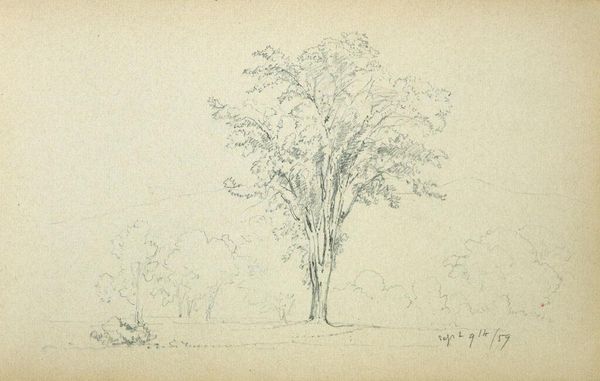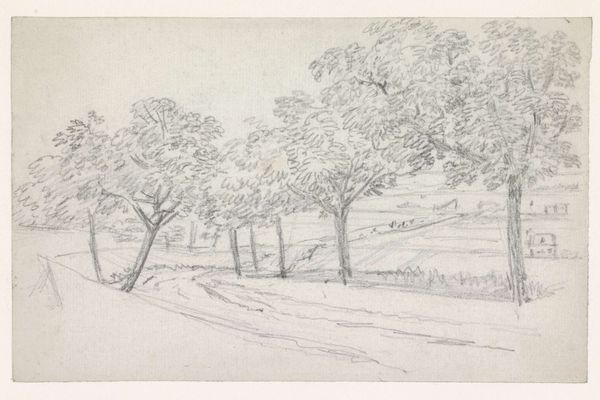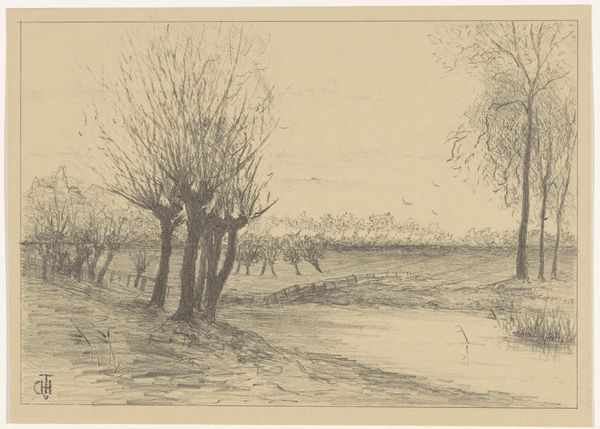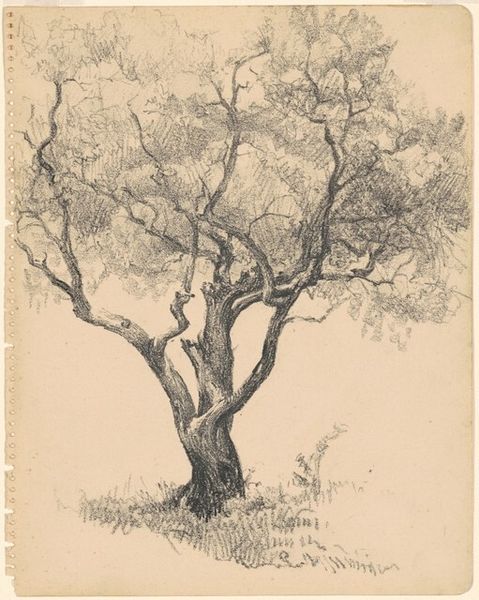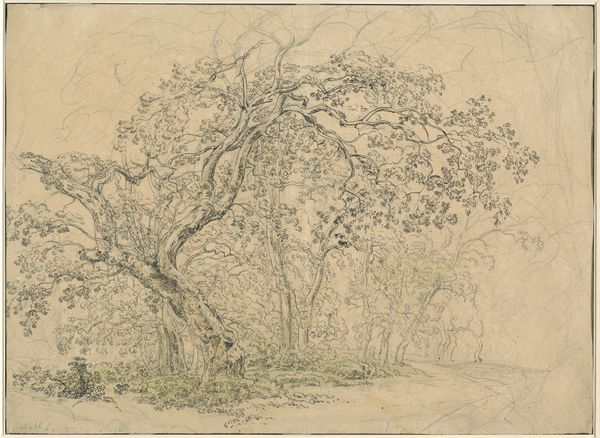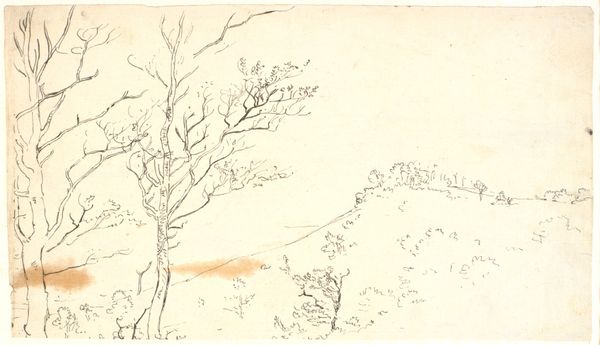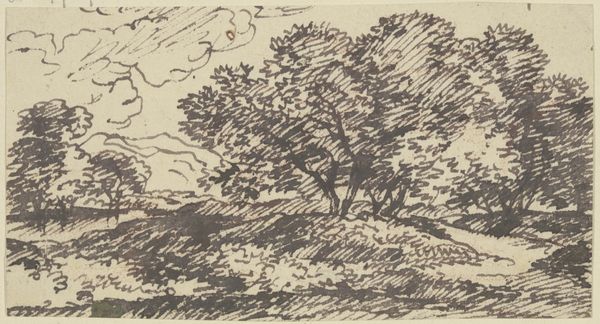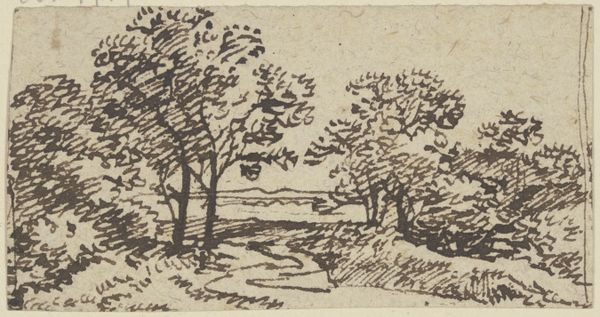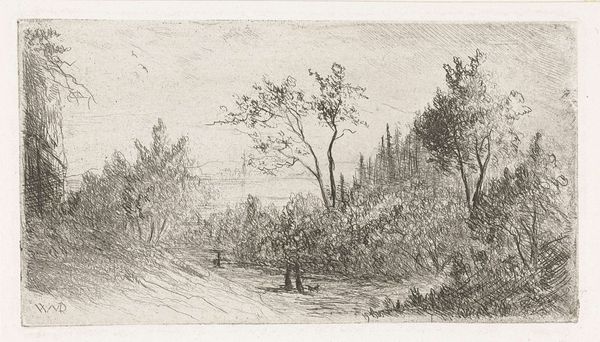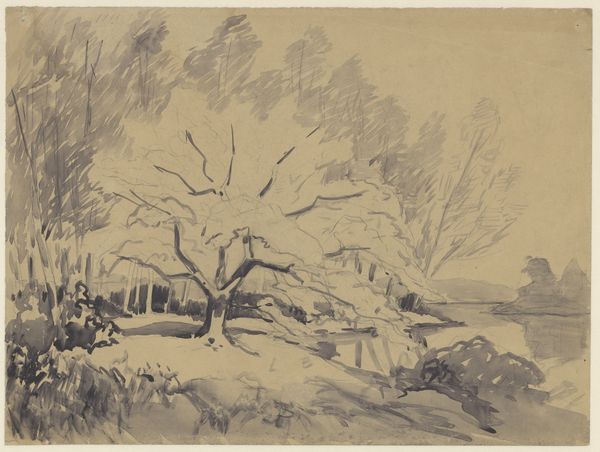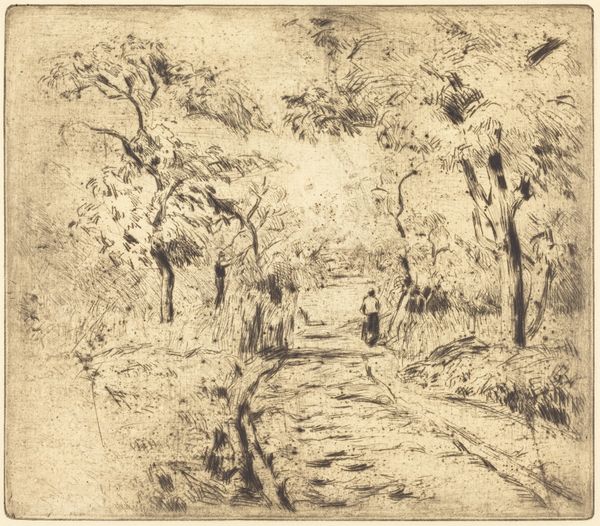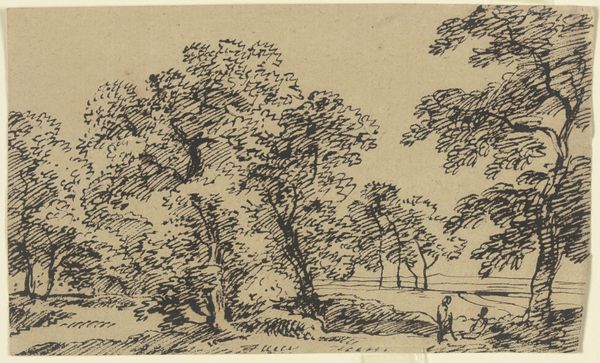
drawing, painting, plein-air, pencil
#
tree
#
drawing
#
garden
#
painting
#
impressionism
#
plein-air
#
landscape
#
figuration
#
plant
#
pencil
#
line
#
genre-painting
Copyright: Public domain
Editor: Here we have Van Gogh's "Orchard with Blossoming Plum Trees (The White Orchard)," created in 1888. It looks like it’s rendered primarily with pencil and ink. The orchard itself has a kind of energetic feel despite the muted palette. What aspects of the piece strike you as most significant? Curator: Notice how the linear strokes articulate the forms and establish spatial relationships. The dynamic, almost frantic, application of the pencil captures a sense of movement. It's not just a representation of trees; it's an articulation of the artist’s perceptual experience of being there. How does the use of line weight affect the overall composition? Editor: I see what you mean. Some of the lines are thick and dark, giving a sense of depth or contour, especially in the foreground. Then there are thinner, sketchier lines that give the impression of blossoms further away. Curator: Precisely. This variance isn’t merely descriptive; it’s structural. Van Gogh's selective emphasis invites our eye to meander, activating the pictorial space. This directs our focus on specific components, enhancing the three-dimensionality of the orchard without explicitly rendering a complete environment. Editor: So the materiality of the lines and their structure become a vital part of experiencing the artwork? Curator: Absolutely. Consider how the empty spaces are not simply absences but integral elements of the structure. The bare canvas permits the eye to rest, underscoring the overall freneticism in contrast. This orchestration of line and space creates tension and directs visual cadence within the artwork. Editor: This linear orchestration constructs a deeper and vivid engagement than just its subjects: blooming trees in a garden! I learned a new approach for thinking about line quality, thanks. Curator: It highlights how the tangible elements shape and mold our viewing process!
Comments
No comments
Be the first to comment and join the conversation on the ultimate creative platform.

